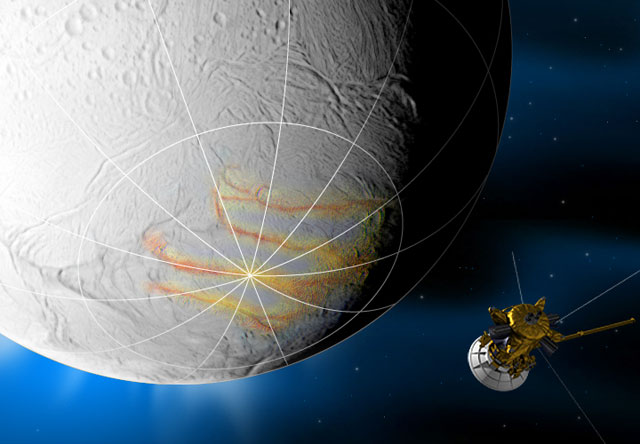-
Tips for becoming a good boxer - November 6, 2020
-
7 expert tips for making your hens night a memorable one - November 6, 2020
-
5 reasons to host your Christmas party on a cruise boat - November 6, 2020
-
What to do when you’re charged with a crime - November 6, 2020
-
Should you get one or multiple dogs? Here’s all you need to know - November 3, 2020
-
A Guide: How to Build Your Very Own Magic Mirror - February 14, 2019
-
Our Top Inspirational Baseball Stars - November 24, 2018
-
Five Tech Tools That Will Help You Turn Your Blog into a Business - November 24, 2018
-
How to Indulge on Vacation without Expanding Your Waist - November 9, 2018
-
5 Strategies for Businesses to Appeal to Today’s Increasingly Mobile-Crazed Customers - November 9, 2018
Saturn’s sixth-largest moon Enceladus supports a massive ocean: NASA Data
Enceladus has been caught periodically squirting water out of slits in its southern pole since 2005, and since then, Cassini has also found signs of simple organic molecules in that plume and hydrothermal activity beneath the surface.
Advertisement
The geologically diverse Enceladus vigorously vents vapour and liquid water from fractures in its icy crust at its south polar region, as discovered early in Cassini’s exploration of the Saturn system. The images Cassini orbiter sent back to Earth showed scientists that the ocean covers the whole moon and thereby provides a large area that could possibly hold some type of life. The new results – derived using an independent line of evidence based on Cassini’s images – confirm this to be the case.
Using a combination of imaging, dynamical modeling, and statistical analysis, researchers at Cornell University and SETI Institute, pointed out tiny wobbles in Enceladus as it orbits the planet.
The team painstakingly measured and tracked the movement of Enceladus, and eventually discovered that Saturn’s gravity was rocking the moon in its orbit ever so slightly.
The team used their data on the wobble, known as a libration, into various models for how Enceladus might be composed on the inside, including ones involving the moon being frozen from its exterior to core.
The mechanisms that might have prevented Enceladus’ ocean from freezing still remain a mystery. The only thing that could account for such an exaggerated wobble was the existence of a global layer of liquid that separates the surface from the core.
According to Thomas and his colleagues, tidal forces due to Saturn’s gravity could be generating much more heat within Enceladus than previously thought.
Carolyn Porco, co-author of the new study, said, “This is a major step beyond what we understood about this moon before, and it demonstrates the kind of deep-dive discoveries we can make with long-lived orbiter missions to other planets”.
Several important discoveries about Enceladus have been made during Cassini’s long mission at Saturn. More information is needed before they can arrive at a concrete answer.
The scientists are uncertain why Enceladus’ ocean is still in liquid form. And this past March, NASA confirmed that Ganymede, a moon of Jupiter’s, also has a subsurface ocean.
Advertisement
In the immediate future, scientists will get a close-up view of the moon when Cassini performs a flyby only 30 miles above the moon’s surface on October . 28.




























